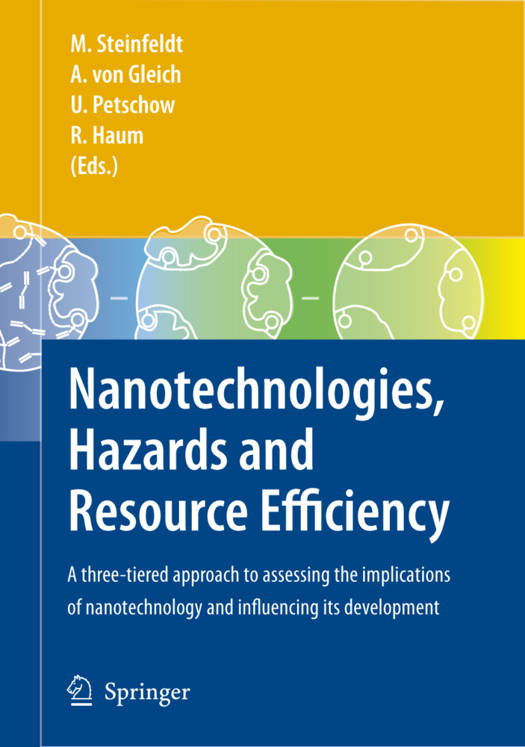
- Retrait gratuit dans votre magasin Club
- 7.000.000 titres dans notre catalogue
- Payer en toute sécurité
- Toujours un magasin près de chez vous
- Retrait gratuit dans votre magasin Club
- 7.000.0000 titres dans notre catalogue
- Payer en toute sécurité
- Toujours un magasin près de chez vous
Nanotechnologies, Hazards and Resource Efficiency
A Three-Tiered Approach to Assessing the Implications of Nanotechnology and Influencing Its Development
Michael Steinfeldt, Arnim Gleich, Ulrich Petschow, Rüdiger Haum
Livre broché | Anglais
105,45 €
+ 210 points
Format
Description
Nanotechnology is frequently described as an enabling technology and 1 fundamental innovation, i.e. it is expected to lead to numerous innovative developments in the most diverse fields of technology and areas of app- cation in society and the marketplace. The technology, it is believed, has the potential for far-reaching changes that will eventually affect all areas of life. Such changes will doubtlessly have strong repercussions for society and the environment and bring with them not only the desired and intended effects such as innovations in the form of improvements to products, pr- esses and materials; economic growth; new jobs for skilled workers; relief for the environment; and further steps toward sustainable business, but also unexpected and undesirable side effects and consequences. With respect to the time spans in which nanotechnology's full potential 2 will presumably unfold, M. C. Roco (2002:5) identified the following stages or generations for industrial prototypes and their commercial expl- tation: Past and present: The "coincidental" use of nanotechnology. Carbon black, for example, has been in use for centuries; more specific, isolated applications (catalysts, composites, etc.) have been in use since the early nineties. First generation: Passive nanostructures (ca. 2001). Application p- ticularly in the areas of coatings, nanoparticles, bulk materials (nan- tructured metals, polymers, and ceramics). Second generation: Active nanostructures (ca. 2005). Fields of appli- tion: particularly in transistors, reinforcing agents, adaptive structures, etc.
Spécifications
Parties prenantes
- Auteur(s) :
- Editeur:
Contenu
- Nombre de pages :
- 271
- Langue:
- Anglais
Caractéristiques
- EAN:
- 9783642093128
- Date de parution :
- 19-10-10
- Format:
- Livre broché
- Format numérique:
- Trade paperback (VS)
- Dimensions :
- 156 mm x 234 mm
- Poids :
- 408 g

Les avis
Nous publions uniquement les avis qui respectent les conditions requises. Consultez nos conditions pour les avis.






